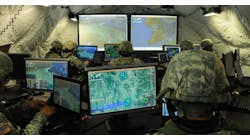Lockheed Martin and the U.S. Air Force recently completed a flight test of the Mk21A reentry vehicle – part of a future intercontinental ballistic missile system that Lockheed is developing under a $996-million contract. The June 17 test from Vandenberg Space Force Base in California and over the Pacific Ocean tested Lockheed’s Mk21A design components and technologies for the vehicle.
Neither the developer nor the service branch commented on the success of the test. According to Lockheed, data collected during the test will inform Mk21A design and future flight-test activities. It added that the Mk21A program is on-schedule.
The Mk21A is USAF’s integrated reentry vehicle and the “front end” of the land-based LGM-35 Sentinel ICBM weapon system, the part designed to carry a nuclear warhead. The Sentinel program is foreseen becoming active later this decade, with a service life projected from 2029 to 2075.
Last fall the USAF awarded a nearly $1 billion contract to Lockheed to devise a “technically low risk and affordable solution to modify existing Mk21 reentry vehicles” to deliver warheads for the U.S. Ground-Based Strategic Deterrent Weapon System.
Lockheed states it is “maturing” its Mk21A design to reduce costs and shorten the development schedule. The current testing includes arming and fuzing subsystem and support equipment, using digital engineering tools, including advanced modeling and simulation.
“This progress is built on a strong foundation—Lockheed Martin’s 65-plus years of demonstrated exceptional performance in reentry technologies and a pioneering digital engineering approach on this program from its beginning,” stated Jay Watson, vice president of Strategic Reentry at Lockheed Martin. “We remain focused on delivering this capability for the warfighter as a trusted partner to the U.S. Air Force for ICBM reentry systems and modernization of the deterrent triad.”






